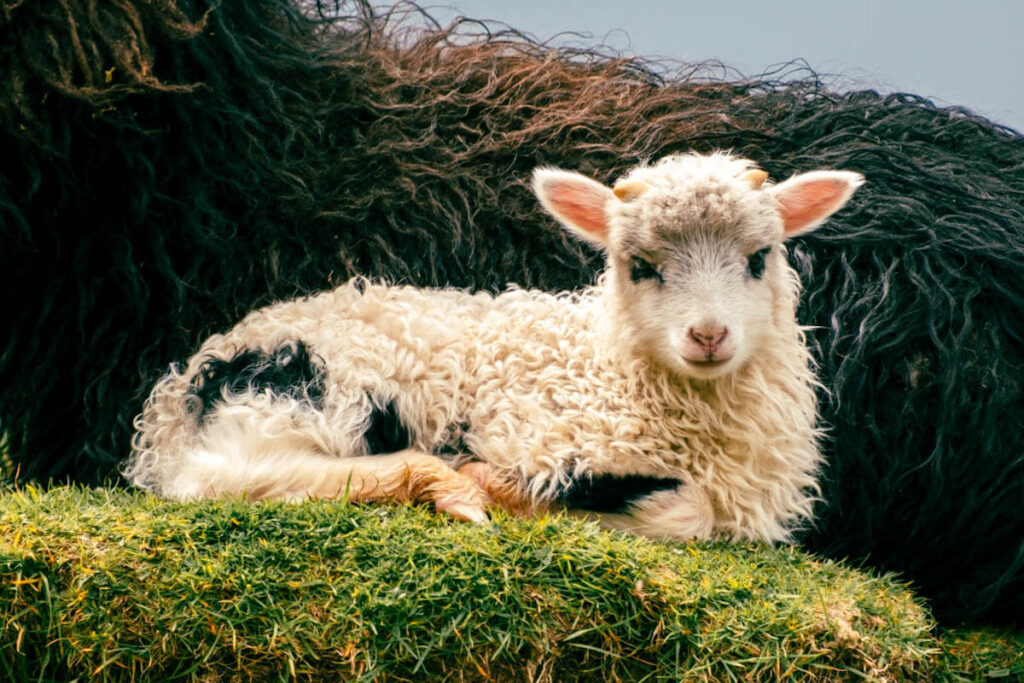There are more sheep than people living on the Faroe Islands. The name ‘Faroe’ comes from the Old Norse word Færeyjar, which means ‘Sheep Islands’. Around 70,000 sheep roam the islands, while the human population is only about 52,000. So it’s almost impossible not to come across sheep when visiting the Faroe Islands.
Faroese sheep
The Faroese sheep, known locally as Føroyskt seyð, are a unique and resilient breed perfectly adapted to the islands’ harsh climate and rugged terrain. They are smaller than many other sheep breeds, but strong and covered in thick, coarse wool in a variety of colours, including white, black, brown and spotted. Faroese sheep have been an essential part of the islands’ culture for centuries and are even featured on the national coat of arms of the Faroe Islands.


What are Faroese sheep kept for?
Faroese sheep are primarily kept for their meat and wool. Lamb is a key ingredient in the local cuisine and is often traditionally dried or fermented; a method known as skerpikjøt. This fermentation process gives the meat an intense, distinctive flavour that is deeply rooted in Faroese food culture. In addition to meat, the wool is also used, although it is less commonly exported today than it was in the past. The sheep live mostly in the wild and are only occasionally gathered by farmers, which enhances the quality of the meat and gives it a unique flavour, thanks to their natural diet of grass and seaweed.
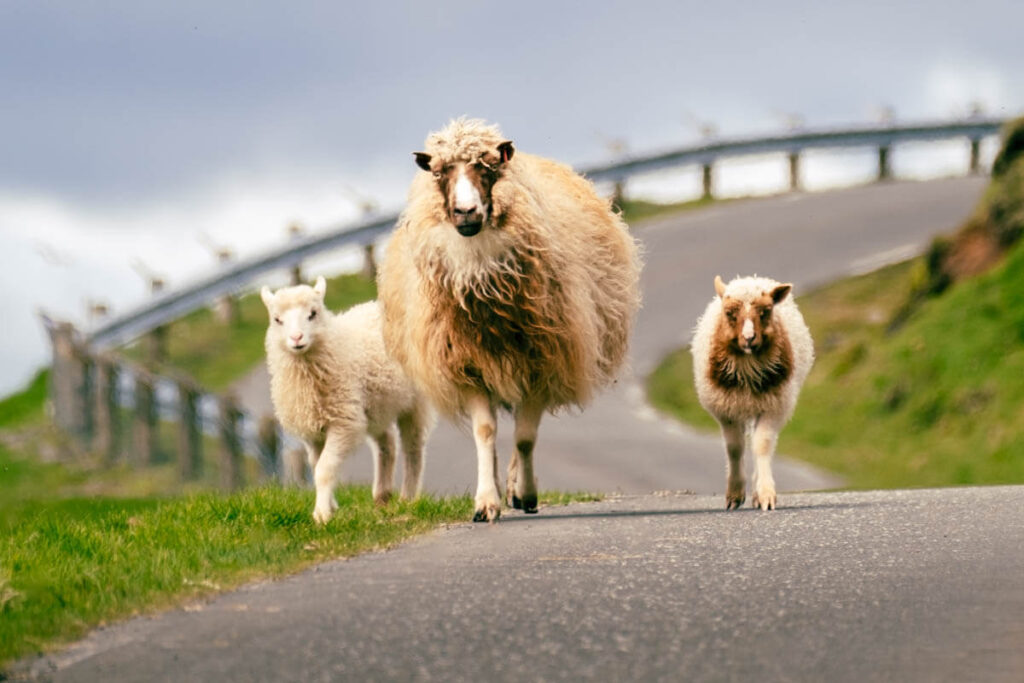
Sheep on the Road
On the Faroe Islands, many sheep live semi-wild and have plenty of space to roam freely. Since the islands are sparsely populated and many pastures are not fenced off, the sheep wander freely through the landscape, including roads and villages. They forage for their own food, which means they sometimes graze along or even on the road. Additionally, they have few natural predators, so they don’t feel easily threatened by cars or people. This can lead to surprising encounters, where drivers often have to slow down or stop for a group of sheep leisurely strolling across the road. If a sheep is accidentally hit, it is mandatory to report the incident; in many cases, the owner of the sheep is compensated.
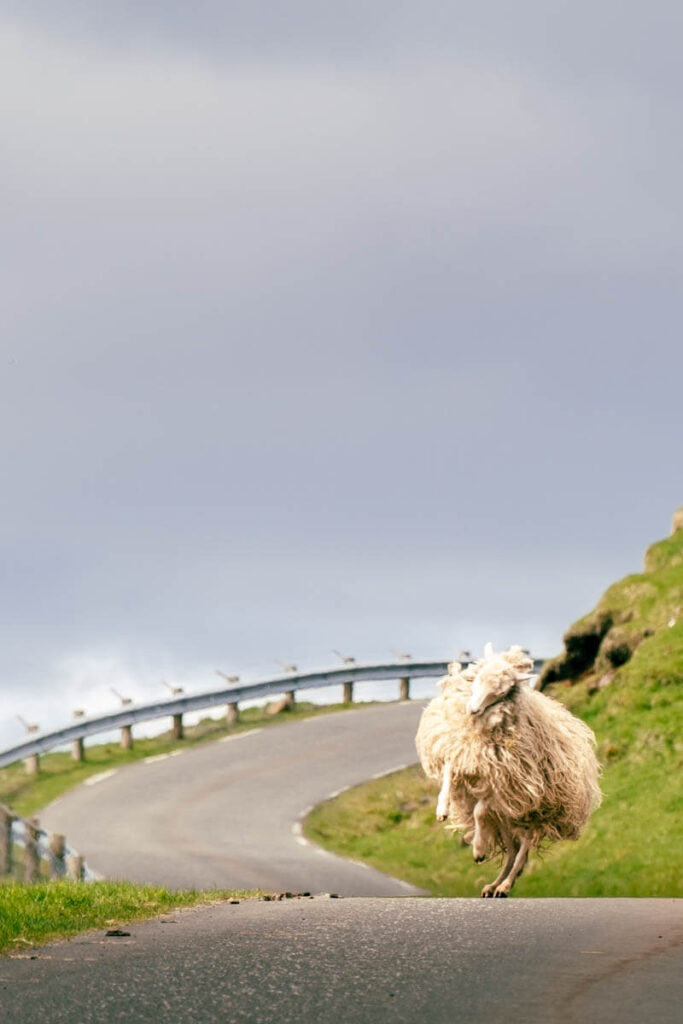
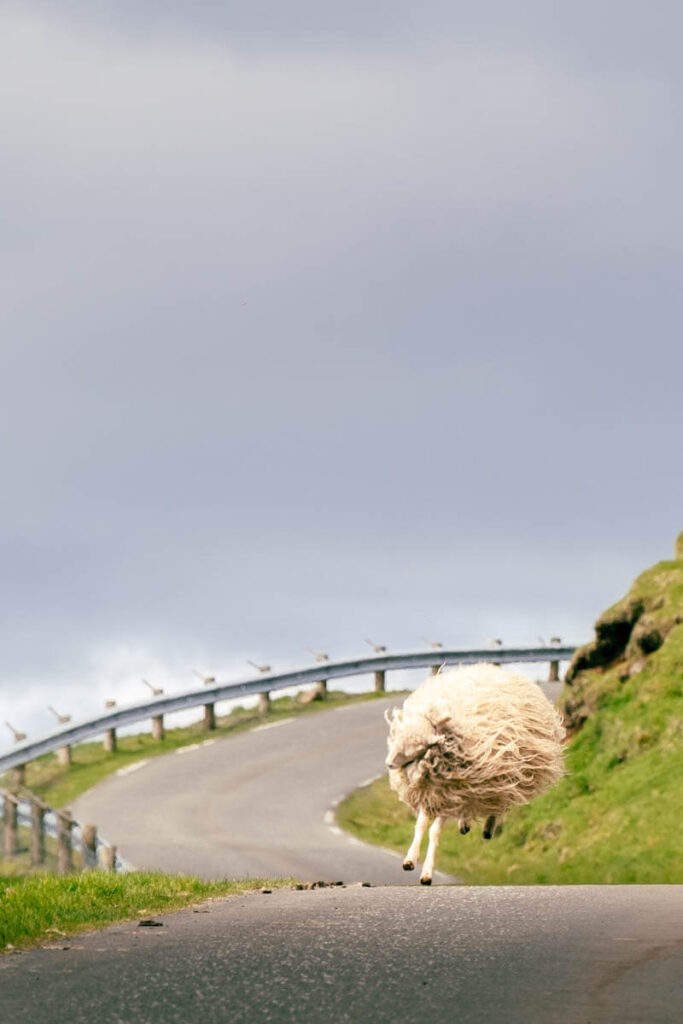
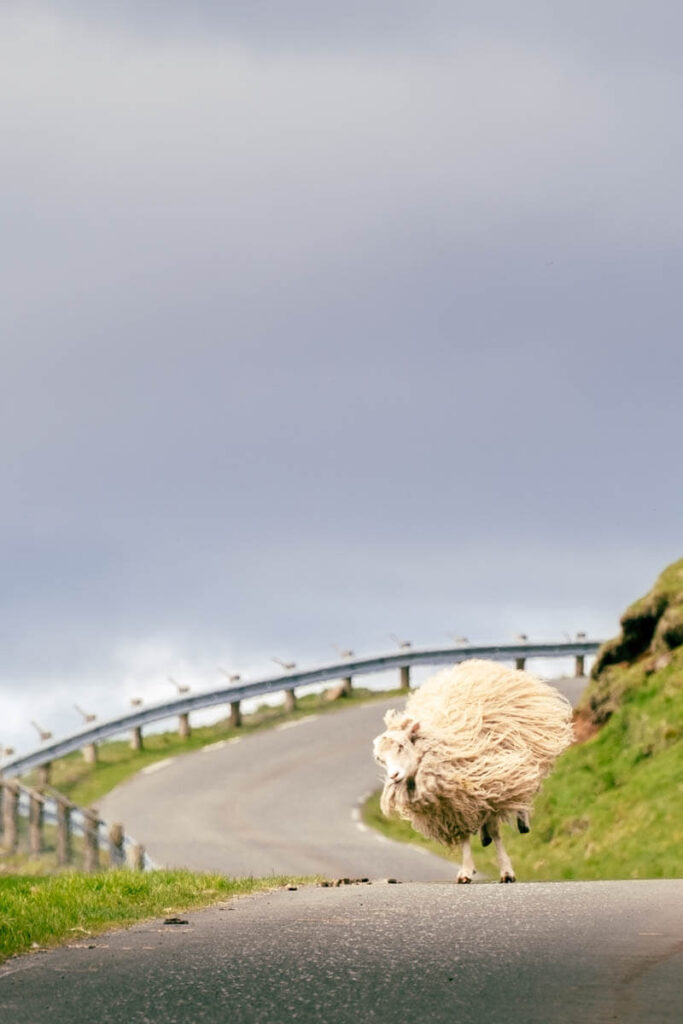
Sheep on rocky islands in the sea
Sheep are often taken to small, remote islands or rocky cliffs where they can graze freely without predators or disturbances. This is done using small boats and sometimes the animals are even hoisted up with ropes to safely bring them ashore. They typically stay there from spring to autumn, eating wild grasses and herbs that grow on these isolated spots. At the end of the season, they are retrieved in the same way: by boat and sometimes via steep paths or again with ropes. This traditional method ensures that the sheep can feast on pristine vegetation, contributing to the unique flavor and quality of their meat.
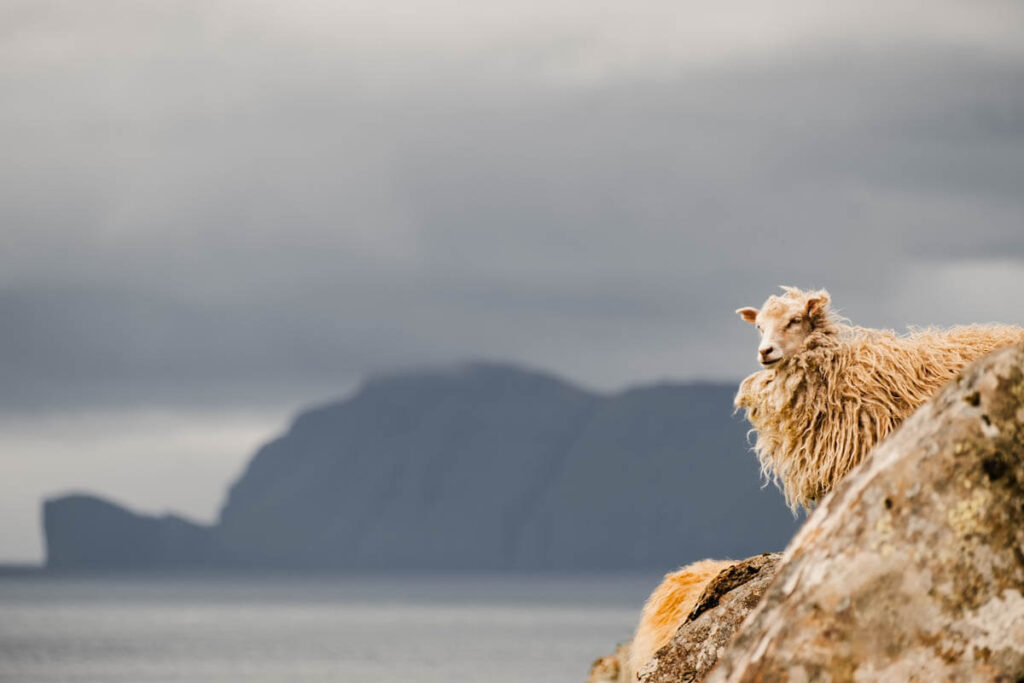
Interesting facts about Faroese sheep
The sheep of the Faroe Islands are no ordinary sheep; they have been an integral part of island life for centuries and have perfectly adapted to the rugged, unpredictable climate. Below are some interesting facts about this unique breed.
- Strong Genetic Roots: This breed is related to ancient Scandinavian and Scottish breeds and has been a staple of Faroese agriculture for centuries.
- Minimal Human Care: Because the sheep mostly live in the wild, they require little human care. They forage for their own food and often seek shelter in the rugged landscape.
- Significance in Folklore: Sheep play a role in Faroese folklore and traditions. They are so important that the Faroese word for ‘year’ (ár) originally referred to the age of a sheep.
- Varied Colors: Unlike many commercial sheep breeds, which are often white, Faroese sheep come in a range of colors, including black, brown, gray and speckled.
- Critical Resource: Historically, sheep were one of the most important food sources on the islands. In times of food scarcity, families could survive on sheep meat and fat.
- Independent Communities: Traditionally, sheep were kept in communal pastures, with villages collectively managing the flocks and gathering the animals at the end of the season.
